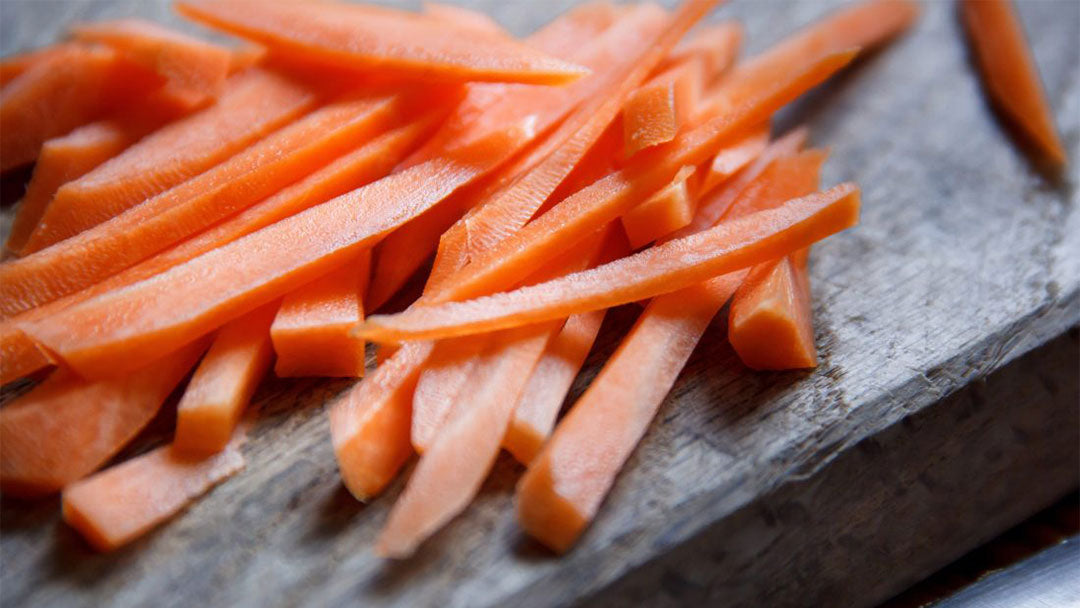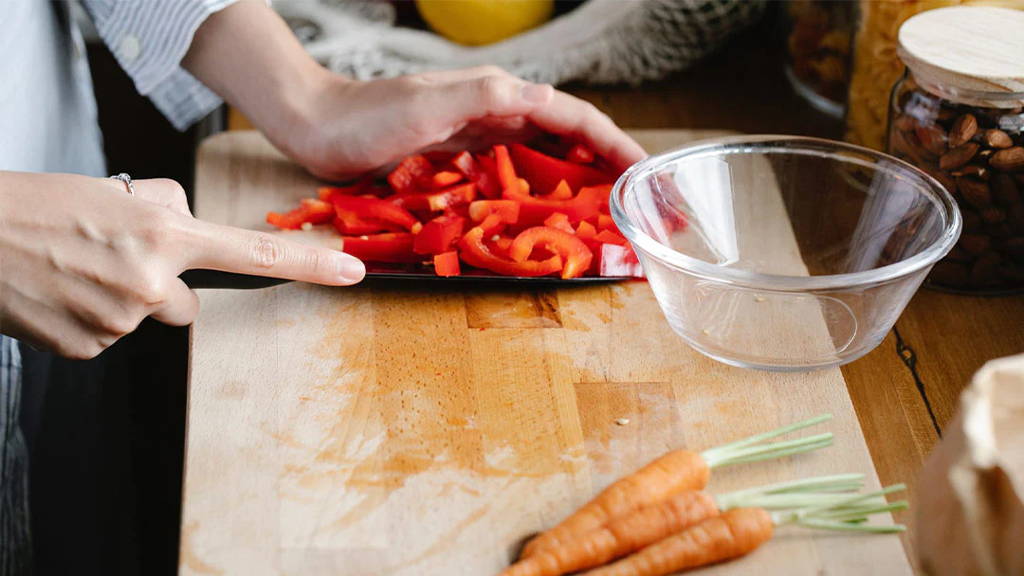When it comes time to enjoy a salad, you want those perfectly cut pieces. Chunks of carrots or cucumber can make it harder to eat with a fork. You need to learn the proper way to slice all of those ingredients. A julienne cut is not just for salads either. Chop up vegetables for tacos, stir fry, and soups. Even meats and fruits can benefit from a proper julienne cut. Here are a few things you should know to create those perfectly bite-sized ingredients.
Do you want the perfect tools to help with those julienne cuts? At de Buyer, all of our knives are made with fiber carbon to meet the needs of both at-home cooks and professional chefs.
Learn the Julienne Cut
Anyone can dice, mince, and chop, but the julienne is a fancier cut for light meals, side dishes, and garnishes. The julienne cut is also known as the allumette or matchstick cut. In some circles, it is just called the French cut. A julienne cut is required for the ingredients in many recipes. When you want to master your knife skills, the julienne cut is perfect for any meat, vegetable, or fruit.
Related: Easy Summer Ratatouille
What Is a Julienne Cut?
If a recipe calls for julienne cut ingredients, the food is cut into thin, long strips that have the appearance of matchsticks. These strips are often about 2 to 3 inches long, and they measure 1/16 to ⅛-inch thick. You might see the words "fine julienne." That means that the ingredients are sliced a bit thinner.
The julienne cut is considered the thinnest of all the strip cuts. The next largest cut is called the batonnet, measuring at ¼ inches thick. A julienne cut is the starting point for a cubed Brunoise cut. With that, the ingredients julienned, turned a quarter, and then diced, producing about 1/16 to ⅛ inch cubes.
The julienne cut is used for firm produce, such as carrots, celery, root vegetables, bell pepper, beets, and apples. If you walk into a grocery store, you might find items like matchstick carrots or French-style green beans. They all had a julienne cut.
Why use the julienne cut for your ingredients? For starters, that uniform cut will ensure an even and quick rate of marinating or cooking. When you add julienned vegetable pieces in a slaw or salad, it adds the perfect crunch to the dish. These pieces are easier to chew and provide a delicate texture to the plate. The julienne cut takes your presentation to the next level.
How To Julienne Fruits, Meats, and Vegetables
Gather the Rest of Your Tools
You need the right knife to cut your food. In many kitchens, the chef's knife is the best choice. It is the safest option to julienne fruits, meats, and vegetables. The blade of the chef's knife is sturdy, and it is an excellent blade to achieve those uniformed slices. It is also a simple knife that most people can easily maneuver. Some cooks and chefs might use a paring knife for softer vegetables and fruits. No matter your selection, make sure that your knife is well-sharpened. Most accidents occur when the knife is not properly sharpened. It should slide down the surface of the ingredient without giving you any resistance.
Related: Heirloom Tomato and Peach Caprese Salad
Don't forget about the cutting board. There are two purposes behind these boards: they help protect the knife blade from damage and give you a flat surface to cut. Knives are dangerous, so you need a sturdy surface to prevent injuries. A wooden butcher block is a fantastic choice for cutting boards. Plastic, stone, and ceramic cutting boards can dull the knife's blade.
Peel and Prepare Your Ingredients
Make a Crosswise Cut
Slice Lengthwise
Cut Into Julienne Strips
An Alternative Option - Use a Mandoline
If you don't feel comfortable with a knife, you don't have to miss out on julienned vegetables. You can take your vegetables or fruits and use a mandoline slicer. Most mandoline slicers have a separate julienne blade attachment. All you have to do is slide the vegetable or fruit down the mandoline. Some people prefer the mandoline since it is easier to get julienned ingredients.
Related: Mandoline Buying Guide
Use the Julienne Cut In Your Next Dish
You can make the perfect julienne cut on those fruits, meats, and vegetables with the proper technique. Your dishes will look great, taste fantastic, and cook evenly. Whether you use a knife or mandoline, creating julienned ingredients requires a few steps.


